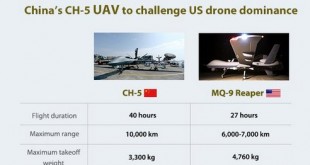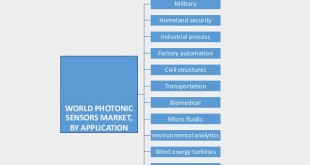Amid a constantly evolving regional security environment and the persistent threat posed by North Korea’s nuclear and missile capabilities, South Korea is aggressively pursuing military self-reliance. In a region marked by longstanding tensions and persistent threats, South Korea has embarked on an ambitious journey to achieve military self-reliance. The nation’s strategic vision is clear: reduce dependence on foreign defense systems by developing indigenous weapons technologies and, at the same time, establishing a robust defense export industry. This dual approach not only strengthens national security but also positions South Korea as a significant player in the global defense market.
The North Korean Threat and Regional Security Dynamics
South Korea’s drive for military self-reliance is deeply rooted in decades of geopolitical tension on the Korean Peninsula. North Korea’s unpredictable behavior, coupled with its advancing nuclear and missile programs, has long compelled Seoul to invest heavily in modernizing its armed forces.
North Korea’s increasing missile launches and nuclear advancements have significantly escalated security challenges on the Korean Peninsula. Recent data reveals that between October 2022 and April 2023, North Korea conducted between 54 and 60 ballistic missile launches—substantially higher than the 19 launches recorded during the same period the previous year. Notably, on March 16, 2023, a suspected submarine-launched ballistic missile (SLBM) was fired off its east coast, followed by additional short-range ballistic missile (SRBM) launches and a suspected cruise missile strike shortly after. These aggressive maneuvers underscore the urgent need for South Korea to not only fortify its missile defenses but also invest in indigenous capabilities that can deter and counter North Korean threats.
North Korea’s continued pursuit of nuclear weapons and intercontinental ballistic missile (ICBM) capabilities further intensifies the security environment. In a 2021 address, North Korean leader Kim Jong Un pledged to expand the country’s nuclear arsenal, including the development of long-range missiles capable of delivering nuclear warheads anywhere in the United States. Such ambitions, combined with North Korea’s increasing reliance on nuclear and missile technologies, have pushed South Korea to re-examine its defense posture and reduce its longstanding dependence on foreign weapons systems.
The existential threat posed by a hostile neighbor with unconventional warfare capabilities and regional and international geopolitics has fueled an urgent need to bolster domestic defense production. Over the years, South Korea has transformed from a nation reliant on foreign military hardware into a leader in cutting-edge defense technology—a shift driven by both necessity and national pride.
US-South Korea Missile Defense Collaboration
The US-South Korea missile defense collaboration is a critical strategic initiative designed to counter North Korea’s persistent missile threats. At its core, the partnership relies on advanced systems like THAAD and Patriot, which work together to intercept and neutralize short- and medium-range ballistic missiles. While THAAD provides a key high-altitude intercept capability within a 200-kilometer range, its limited coverage means it cannot protect all regions, including major urban centers like Seoul. Meanwhile, the more numerous Patriot systems offer additional layers of defense, although they too have limitations in range and capacity, particularly against simultaneous mass missile launches.
Advancements in Domestic Weapons Development
Recognizing the strategic vulnerabilities of relying on imported defense systems, South Korea has prioritized building a robust domestic defense industry. The Defense Acquisition Program Administration (DAPA) is leading efforts to foster indigenous research and development, promote domestic defense companies, and encourage the export of locally manufactured weapons systems. This doctrine of self-reliant national defense, which dates back to the Park Chung-hee era, has been reinvigorated by successive administrations and is now central to South Korea’s defense strategy.
One of the key challenges for South Korea has been its historical dependence on foreign technologies, which can lead to production delays, increased costs, and export restrictions imposed by supplier countries. To address this, South Korea is vigorously investing in domestic research and development to develop local substitutes for critical components such as fighter jet engines, transmission systems, and advanced electronic components. Initiatives like the establishment of defense industry innovation clusters in cities like Changwon aim to support small and medium enterprises in replacing imported parts, thereby strengthening the local supply chain and enhancing export competitiveness.
Looking ahead, South Korea is committed to allocating more than 80% of its 100 trillion won defense budget over the next five years to locally made weapons.
In recent years, South Korea has made significant strides in developing its own state-of-the-art weapon systems. The indigenous production of advanced platforms, such as the K2 Black Panther main battle tank and the emerging KF-21 Boramae fighter jet, highlights the country’s commitment to innovation and self-sufficiency. These systems are designed to meet the unique operational requirements imposed by the North Korean threat, with a strong focus on integrating advanced electronics, network-centric warfare capabilities, and precision-guided munitions.
In addition to ground and air defense systems, South Korea has also invested in advanced missile defense and naval capabilities. South Korea is enhancing its missile defense through the acquisition of additional airborne early warning and control (AEW&C) aircraft under the AEW-II program, aiming to bolster its ability to track North Korean missiles and secure its airspace. By harnessing domestic technological expertise and research and development, the country is not only enhancing its own security but also developing versatile platforms that can be adapted for export. These efforts demonstrate South Korea’s determination to establish a robust and independent defense industrial base, capable of withstanding regional challenges and future-proofing its military capabilities.
The government’s strategic emphasis on self-reliance is further reflected in policy reforms aimed at prioritizing domestic production and export of indigenous weapons. These measures not only reduce vulnerabilities associated with reliance on external suppliers but also pave the way for South Korea to become a significant player in the global arms market.
Building a Thriving Defense Export Industry
South Korea’s efforts to develop indigenous weapons have not only strengthened its national defense but also catalyzed the growth of a competitive export market. Historically dependent on U.S.-made armaments, South Korea now boasts a robust defense industry with global reach. Leading companies such as Hyundai Rotem, Hanwha Defense, Korea Aerospace Industries, and LIG Nex1 have garnered international recognition for their advanced technologies, ranking among the world’s top defense companies.
As South Korea strengthens its domestic military production, it is simultaneously expanding its footprint in the global defense market. South Korean defense companies have begun to secure export deals with various countries seeking reliable, high-quality military technology. The country’s ability to produce advanced systems at competitive prices—coupled with its reputation for innovation and rigorous quality standards—has made its weapons attractive to international buyers.
The nation’s arms exports have witnessed exponential growth over the past decade, rising from a modest $2-3 billion in the late 2010s to a staggering $14 billion in 2023, with projections reaching $20 billion in 2024. High-profile export agreements have been secured with key international markets, including Saudi Arabia’s acquisition of $3.2 billion worth of Chungung II Medium Surface-to-Air Missiles, Australia’s $7 billion deal for 129 Redback Infantry Fighting Vehicles, and an anticipated $6-8 billion contract with Romania for 300-500 K2 Main Battle Tanks.
South Korea’s defense export strategy is not only about selling products but also about forging strategic partnerships that enhance technology transfer and collaborative research. These alliances bolster the nation’s position as a trusted partner in global security, opening up new markets and paving the way for further technological advancements. As demand for sophisticated and cost-effective military solutions grows worldwide, South Korea’s defense industry is poised for exponential growth.
Exporting Aircraft and Advanced Systems
South Korea’s prowess in aerospace is exemplified by the KAI T-50 aircraft, one of its most successful export platforms. Despite occasional bidding setbacks, the T-50 has been sold to the Philippines, Iraq, Indonesia, and Thailand, with additional interest from countries such as Argentina. Alongside the T-50, the country is advancing projects like the KF-X multirole fighter jet and the KF-21 Boramae, the latter poised to become a cornerstone of South Korea’s future air defense. These projects underscore South Korea’s ambition to transition from reliance on U.S.-made aircraft to developing homegrown solutions, further solidifying its standing in the competitive global defense market.
Exporting Ground Vehicles, Naval Vessels, and Autonomous Systems
In addition to its aerial innovations, South Korea has made significant progress in exporting ground vehicles and naval systems. The K9 Thunder self-propelled howitzer, renowned for its competitive performance and cost-effectiveness, has become a flagship export to markets in Poland, India, Finland, Estonia, and Norway. Similarly, the K2 Black Panther main battle tank has attracted significant interest from countries such as Poland and Oman, while the AS21 Redback IFV is under consideration by the Australian Army.
South Korean shipbuilding, renowned for its advanced technologies and cost-effective production, has also bolstered the nation’s export profile. Major deals, such as Indonesia’s purchase of Jang Bogo-class submarines, highlight South Korea’s capacity to deliver sophisticated naval platforms on a global scale.
Furthermore, South Korea is pioneering the use of autonomous and unmanned systems in its defense exports. Swarm drones, surveillance systems, and killer sentry robots are being deployed to enhance situational awareness and defense capabilities, particularly in the heavily militarized Korean Demilitarized Zone (DMZ). These systems, equipped with advanced sensor technologies and automated targeting capabilities, underscore South Korea’s commitment to integrating modern warfare technologies into its defense exports.
Additionally, South Korea’s expertise in shipbuilding has enabled it to become one of the world’s leading submarine exporters, as evidenced by Indonesia’s successive purchases of Jang Bogo-class submarines. These robust export successes reflect South Korea’s strategic drive to achieve military self-reliance, reduce dependency on foreign technologies, and secure a formidable position in the global defense market.
South Korea’s defense export strategy has evolved dramatically in recent years. Between 2010 and 2014, the nation exported its military hardware to just a few countries; however, by 2019, South Korea’s arms exports had more than doubled, making it one of the top 10 arms exporters globally. Key products, such as the KAI T-50 aircraft and the K9 Thunder self-propelled howitzer, have secured major contracts in markets spanning Southeast Asia, the Middle East, and Europe.
South Korea’s export portfolio has expanded significantly, increasing from six to twelve major weapon systems, while the number of importing countries has grown from four to twelve in 2023. High-profile export deals have bolstered this trend; for example, Saudi Arabia recently acquired $3.2 billion worth of Chungung II Medium Surface-to-Air Missiles, Australia finalized a $7 billion contract for 129 Redback Infantry Fighting Vehicles, and Romania is in advanced discussions for a $6–8 billion deal involving 300–500 K2 Main Battle Tanks. These agreements not only generate substantial revenue but also enhance South Korea’s influence in global defense markets. This export success not only generates significant revenue but also bolsters South Korea’s reputation as a reliable defense partner in an increasingly multipolar world.
The Impact of the Ukraine War
The conflict in Ukraine has had a profound impact on global defense spending and has re-emphasized the importance of conventional weapons systems. The Ukraine War has spurred increased demand for effective, rapidly deployable defense systems, providing South Korea with a unique opportunity to expand its defense exports. For instance, Hanwha Aerospace’s rapid production of its K9 self-propelled howitzer—manufactured in approximately six months at a cost of $3.5 million each—has positioned it as a strong competitor against slower Western counterparts. This accelerated production capacity, coupled with strategic export deals with countries like Poland and Romania, has significantly boosted South Korea’s defense export revenue and further cemented its role as a critical supplier in a turbulent global market.
References and resources also include:
https://www.cnbc.com/2017/09/11/south-korea-missile-defense-thaad-system-cant-do-the-job-alone.html
https://foreignpolicy.com/2019/11/01/south-korea-weapons-production-united-states/
https://en.wikipedia.org/wiki/Defense_industry_of_South_Korea
 International Defense Security & Technology Your trusted Source for News, Research and Analysis
International Defense Security & Technology Your trusted Source for News, Research and Analysis

